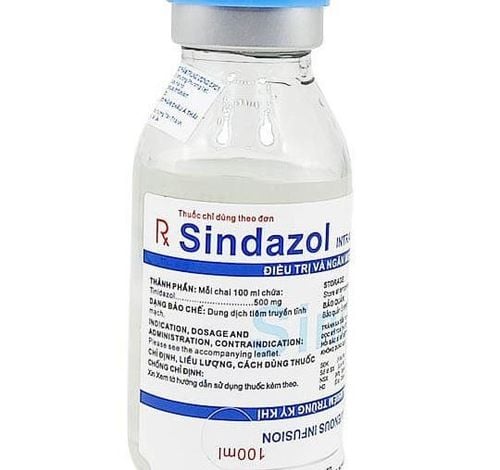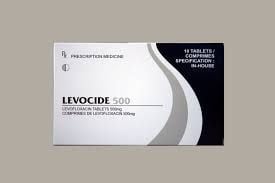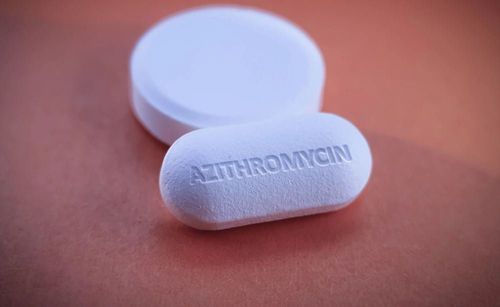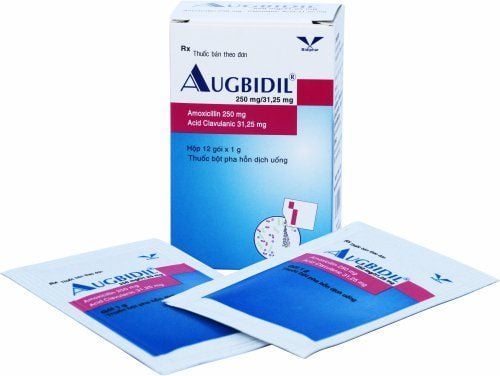This is an automatically translated article.
Sulcetam Inj is a medicine containing an active ingredient mixture of Cefoperazone and Sulbactam Sodium with the effect of treating bacterial infections. Let's learn about Sulcetam Inj through the article below.1. What is Sulcetam?
Sulcetam Inj is a medicine containing the active ingredient 500mg of Cefoperazone as Cefoperazone sodium and 500mg of Sulbactam as Sulbactam Sodium.In which Cefoperazone is a semi-synthetic antibiotic belonging to the 3rd generation cephalosporin group with bactericidal effect by inhibiting the synthesis of growing and dividing bacterial cell walls. This is an antibiotic for parenteral use with very stable antibacterial activity against beta-lactamases formed in most gram-negative bacteria. Therefore, Cefoperazone has a broad spectrum of activity against gram-negative bacteria such as penicillinase-producing strains of N. gonorrhoeae and most strains of Enterobacter, Proteus, Citrobacter, Providencia, Morganalle, Shigella, Salmonella and Serratia spp. However, the effect of Cefoperazone against Enterobacteriaceae is weaker than that of other 3rd generation Cephalosporin antibiotics.
Sulbactam has a structure similar to beta lactams but has very weak antibacterial activity, so it is usually not used alone in clinical practice. When combined with beta lactamase, sulbactam inactivates this enzyme, so it is able to protect antibiotics with beta latam structure from being degraded. Therefore, sulbactam is used in combination with the penicillin group to broaden the spectrum of action of penicillin to beta-lactamase-producing bacteria such as enterobacteria, E. coli, staphylococcus, Klebsiella, Branhamella, Proteus, Neisseria, microorganisms. anaerobic bacteria Bacteroides, Acinobacter.
2. Indications of Sulcetam Inj
Sulcetam Inj Injection is indicated for the treatment of infections caused by susceptible bacteria such as:Upper and lower respiratory tract infections. Urinary tract infections . Peritonitis , cholecystitis, bile duct inflammation, other infections of the abdominal cavity. Sepsis. Meningitis . Skin and soft tissue infections. Genital tract infection. Due to the broad antibacterial spectrum of Sulcetam Inj injection, it can be used alone in treatment. However, this drug may be indicated for use in combination with other antibiotics.
3. Instructions for using Sulcetam Inj
The drug is administered by intramuscular or intravenous infusion.Adults In mild and moderate infections, the dose is 1-2g every 12 hours. Severe infections use 2-4g every 12 hours. Children: 25-100mg/kg every 12 hours. Do not use the drug for people with a history of allergy to penicillin group antibiotics, cefoperazone, sulbactam or any antibiotic of the cephalosporin group.
4. Some notes when using Sulcetam Inj
Caution should be exercised when administering cefoperazone and sulbactam to people with a penicillin allergy. Patients should be advised not to consume alcohol while using Sulcetam injection. Disulfiram-like reactions have been identified in patients receiving alcohol within 72 hours of cefoperazone administration.Cefoperazone and sulbactam can cross the placental barrier, so the drug should be used in pregnant women only when clearly needed. On the other hand, this drug is also secreted into breast milk in small amounts, so it should be used with caution when used in nursing mothers.
5. Interactions between Sulcetam Inj and other drugs
Drinking alcohol or alcohol-containing products while taking the drug can inhibit aldehyde dehygrogenase and produce a disufiram-like reaction. Features include hot flushes, headache, sweating, and tachycardia during or after 5 days of treatment. Therefore, cefoperazone/sulbactam should be used with caution with alcoholic medicinal products. Aminoglycoside antibiotics: Sulbactam / cefoperazone should not be used together with amino glycoside antibiotics because it will reduce the activity of the drug due to the incompatibility between them. In cases where a combination of sulbactam/cefoperazone and aminoglycosides is required, the infusion should be interrupted and the infusion tube flushed between doses or spaced apart. In combination with anticoagulants, non-steroidal anti-inflammatory drugs, thrombolytic drugs can cause easy bleeding. Should not be mixed with amikacin, ketamycin B, gentamicin, meclofenoxate, doxycynlin, potassium magnesium aspartate, ajmalin, diphenhydramine to avoid precipitation. Reference source: thuocbietduoc.com.Please dial HOTLINE for more information or register for an appointment HERE. Download MyVinmec app to make appointments faster and to manage your bookings easily.













